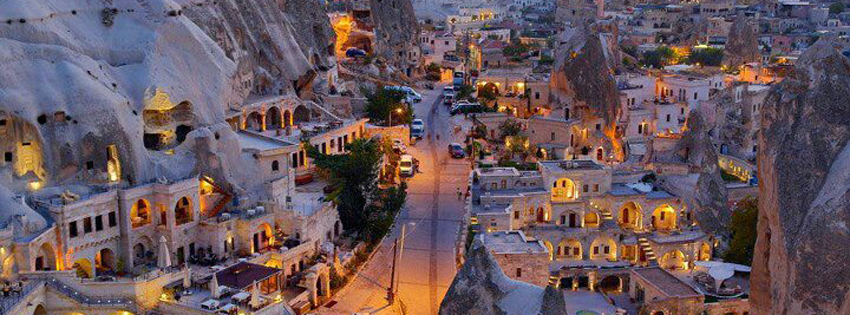Turkey
The Republic of Turkey, is a contiguous transcontinental country, spanning parts of Southeastern Europe and Western Asia.
Blue Mosque
Sultan Ahmed Mosque
Sultan Ahmet Mh., Torun Sk No:19, 34400 Istanbul, Turkey
+90 212 458 4983
Ottoman architecture, Islamic architecture
Mosque, Monument
The Sultan Ahmed Mosque is a historic mosque in Istanbul. The
mosque is popularly known as the Blue Mosque for the blue tiles adorning
the walls of its interior.
It was built from 1609 to 1616, during the rule of Ahmed I.
The Sultan Ahmed Mosque has one main dome, six minarets, and eight
secondary domes. The design is the culmination of two centuries of Ottoman mosque development.
The most important element in the interior of the mosque is the mihrab,
which is made of finely carved and sculptured marble, with a stalactite
niche and a double inscriptive panel above it. It is surrounded by many
windows. The mosque has been designed so that even when it is at its most crowded, everyone in the mosque can see and hear the imam. The many lamps inside the mosque were once covered with gold and gems. All these decorations have been removed or pillaged for museums.
Large crowds of both Turks and tourists gather at sunset in the park
facing the mosque to hear the call to evening prayers, as the sun sets
and the mosque is brilliantly illuminated by colored flood lights.


Oludeniz ( Blue Lagoon )
Aegean, Province Mugla
Oludeniz ( translation name Blue Lagoon ) is a small village and beach resort. It is located 14 km to the south of Fethiye, near Mount Babadag. Oludeniz remains one of the most photographed beaches on the Mediterranean. It has a secluded sandy bay at the mouth of Oludeniz, on a blue lagoon. The lagoon is a national nature reserve and construction is strictly prohibited. The seawater of Oludeniz is famous for its shades of turquoise and aquamarine, while its beach is an official Blue Flag beach, frequently rated among the top 5 beaches in the world by travelers and tourism journal.
Oludeniz has typical Mediterranean Climate. The weather is warm all year round.
Scuba diving is the most popular underwater activity. Local diving agencies provides courses and required scuba diving licences.
Oludeniz is also famous for its paragliding opportunities. It is regarded as one of the best places in the world to paraglide due to its unique panoramic views
|
|


Bodrum Castle
Çarşı Mh., 48400 Bodrum/Muğla, Turkey
+90 252 316 2516
Bodrum Castle, located in southwest Turkey in the city of Bodrum,
was built by the Knights Hospitaller starting in 1402 as the Castle of
St. Peter.The construction of the castle began in 1404 under
the supervision of the German knight-architect Heinrich Schlegelholt.
Construction workers were guaranteed a reservation in heaven by a papal
decree of 1409. They used squared green volcanic stone, marble columns and reliefs from the nearby Mausoleum of Maussollos to fortify the castle.
The architect applied the latest features in castle design; the passages leading to the gates were full of twists and turns.
The construction of the three-storied English tower was finished in
1413. One door opens to the north, to the inner part of the castle,
while the other leads to the western rampart. The western tower was also called "the Lion Tower".
For over a century St. Peter's Castle remained the second most important
castle of the Order. It served as a refuge for all Christians in Asia
Minor.
In 1962 the Turkish Government decided to turn the castle into a museum
for the underwater discoveries of ancient shipwrecks in the Aegean Sea. This has become the Bodrum Museum of Underwater Archaeology, with a collection of amphoras, ancient glass, bronze, clay, and iron items. It is the biggest museum of its kind devoted to underwater archaeology. Most of its collection dates from underwater excavations after 1960.



Mount Nemrut
Nemrut or Nemrud is a 2,134 m high mountain in southeastern
Turkey, notable for the summit where a number of large statues are
erected around what is assumed to be a royal tomb from the 1st century
BC.
The mountain lies 40 km (25 mi) north of Kahta. In 62 BC, King Antiochus I Theos of Commagene
built on the mountain top a tomb-sanctuary flanked by huge statues high of himself, two lions, two eagles and various gods, such as Vahagn-Hercules, Aramazd-Zeus or Oromasdes, Bakht-Tyche, and Mihr-Apollo-Mithras.
The western terrace contains a large slab with a lion, showing the arrangement of stars and the planets. Possible uses for this site is thought to have included religious
ceremonies, due to the astronomical and religious nature of the
monument.
The arrangement of such statues is known by the term hierothesion.
In 1987, Mount Nemrut was made a World heritage site by UNESCO.


Ortakoy Mosque
Mecidiye Mh., 34347 Beşiktaş/İstanbul, Turkey
Within the mosque hang several examples of Islamic calligraphy executed by Sultan Abdülmecid himself, who was also a hattat (master calligrapher.).



Cappadocia
Central Anatolia Region, Turkey
Cappadocia is a historical region in Central Anatolia, largely in Nevsehir Province, in Turkey. The relief consists of a high plateau in altitude that is pierced by volcanic peaks. The boundaries of historical Cappadocia are vague, particularly towards
the west. To the south, the Taurus Mountains form the boundary with Cilicia and separate Cappadocia from the Mediterranean Sea. To the west, Cappadocia is bounded by the historical regions of Lycaonia to the southwest, and Galatia to the northwest.
Cappadocia was known as Hatti in the late Bronze Age, and was the homeland of the Hittite power centred at Hattusa.
The area is a popular tourist destination, as it has many areas with unique geological, historic, and cultural features.















